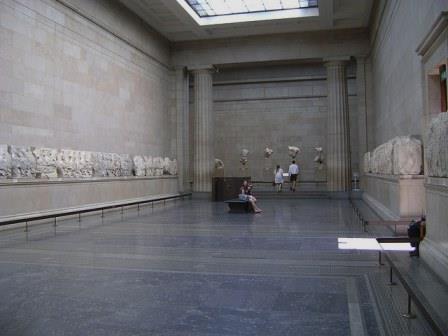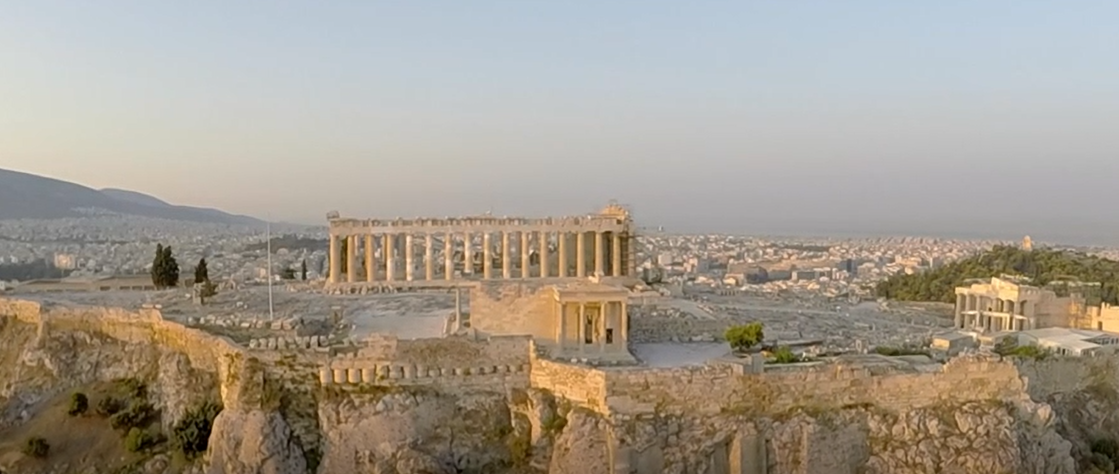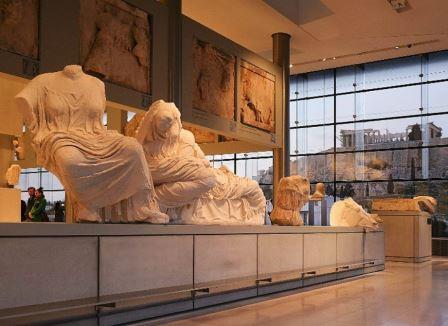UK's Secretary of State for Digital, Culture, Media and Sport, Oliver Dowden has written to museums and galleries (22 September 2020):'The significant support that you receive from the taxpayer is an acknowledgement of the important cultural role you play for the entire country.' He urged institutions to 'continue to act impartially', something he described as 'especially important' as the Government conducts its Comprehensive Spending Review - an apparent threat that funding could be at risk.
The British Museum said in a statement: 'The British Museum has no intention of removing controversial objects from public display. 'Instead, it will seek where appropriate to contextualise or reinterpret them in a way that enables the public to learn about them in their entirety.'
Mr Dowden's letter, seen by the Telegraph, comes after a summer of cultural clashes over Britain's colonial past. The letter sent to museums and galleries including the British Museum, Tate galleries, Imperial War museums, National Portrait Gallery, National Museums Liverpool, the Royal Armouries, the Science Museum, the Victoria and Albert Museum, and the British Library.
Mr Dowden said in the letter: 'The Government does not support the removal of statues or other similar objects.'
'Historic England, as the Government's adviser on the historic environment, have said that removing difficult and contentious parts of it risks harming our understanding of our collective past.'
The letter continued: 'As publicly funded bodies, you should not be taking actions motivated by activism or politics.'
- This smacks of disingenuousness. Or even a sort of cultural bribery. Any object in a ‘universal museum’ is a political acquisition, activated by the then colonial power - namely Britain. For 'activism' read looted or just taken. Britain took artefacts just because it could, not with malign intent perhaps but more out of consuming interest and curiosity. However, the cultural importance to the country from which objects were abducted was of no interest to to the colonialists. The British Empire is no more and times have changed and a certain respect for other countries’ history must now enter the museum equation. Our understanding of Britain’s past would be hugely enhanced were Elgin’s stolen Marbles returned to their rightful place in Greece.
The British Museum's most controversial artefacts , the Elgin Marbles are a collection of classical Greek marble sculptures, inscriptions and architectural members that were mostly created by Phidias and his assistants.
- These only became ‘a collection' when they were 'collected’ by Lord Elgin. FACT: these figures and bas reliefs were carved into the Pentelic marble blocks of which the Parthenon was constructed, and were thus part and parcel of the architectural structure of the building itself. Phidias built the Parthenon for Periclean Athens to celebrate the goddess Athena - an historic rite which remains a mystery to modern Britons, even though the beauty of the sculptures as idealised human beings is unmistakeable.
The 7th Earl of Elgin, Thomas Bruce, removed the Parthenon Marble pieces from the Acropolis in Athens while serving as the British ambassador to the Ottoman Empire from 1799 to 1803.
FACT: in so doing he destroyed many parts of the building no thanks to the crude methods his people used to detach the figures from their places, catastrophically damaging the structure of this architectural masterpiece.
In 1801, the Earl claimed to have obtained a permit from the Ottoman authorities to remove pieces from the Parthenon.
FACT: His claim has never been substantiated and thus far not a shred of evidence has been found to support Elgin’s claim.
As the Acropolis was still an Ottoman military fort, Elgin required permission to enter the site.
FACT: ostensibly for a few pieces already fallen to the ground, ('qualche pezzi’ in the Italian of the one and only extant permission) but NOT to hack them off the structure.
His agents subsequently removed half of the surviving sculptures, as well as architectural members and sculpture from the Propylaea and Erechtheum.
FACT: no proof of any permission to do so has ever been found.
The excavation and removal was completed in 1812 at a personal cost of around £70,000
FACT: His ‘personal costs’ included large amounts given as bribes to Ottoman functionaries, often no doubt to turn a blind eye to his depredations. Most of his bribes are carefully recorded.
The sculptures were shipped to Britain at the expense of the British Crown in a naval ship but in Greece, the Scots aristocrat was accused of looting and vandalism.
FACT: rightly so. Elgin had no intention of displaying his collection to the public but intended them solely for his Scottish seat and his own enjoyment. Only when he later went bankrupt was he forced to sell them.
They were bought by the British Government in 1816 and placed in the British Museum.
FACT: They were bought for £35,000 to be placed under the protection of the Trustees, who still hold them in Trust. Trustees cannot own, they can only hold in Trust. And they could decide to cease doing so by returning the Marbles. Good sense and decency demands it.
They still stand on view in the purpose-built Duveen Gallery.
FACT: They have been there for more than 200 years. Isn’t that long enough?

FACT: The visitor is not told the full story: that these pedimental figures are separated from the other half of that pediment in Athens; that most of the frieze - which once galloped right round the building depicting the pan-Atheniac procession - have been so crudely split that the front hooves of a horse, say, can be seen in Britain and the back half in Athens. These are senseless and crude divisions which deprive visitors in Britain and in Greece of seeing the completed work of sculptural art.
Greece has sought their return from the British Museum through the years, to no avail.
The British Minister for Culture has recently stated: “[the British Museum] will seek where appropriate to contextualise or reinterpret them (the artifact) in a way that enables the public to learn about them in their entirety.”
FACT: The BM offers no information for the public to learn the full history of the Marbles 'in their entirety’. They are displayed out of context and the manner of their acquisition is not openly and fully recounted, so how is the public to learn that the building from which they were so crudely torn still stands above Athens for all to see? How are they to know Elgin had no official permission to take them? This makes these pieces unique, because no other building from the ancient world has boasted such transcendent carving as an integral part of it and yet still stands in the 21st Century.

The authenticity of Elgin's permit to remove the sculptures from the Parthenon has been widely disputed, especially as the original document has been lost. Many claim it was not legal.
FACT: This is of prime importance in the dispute: there is no indication that the original document ever existed, let alone that it was ‘legal.'
However, others argue that since the Ottomans had controlled Athens since 1460, their claims to the artefacts were legal and recognisable.
FACT: This is a weak argument that falls under the heading of mere Opinion. Independent Greece does not recognise these claims. Furthermore, the Marbles mark the highest expression of its culture at its height - the remarkable civilisation that was to Hellenise the Western world. The Ottoman occupying powers had no interest in preserving such an alien culture and used the Parthenon merely as an armoury. It was blown up by a Venetian attack on Athens, gravely ruining some of the building. Elgin did the rest.
When the Greeks fought for their independence the so-called legality of Ottoman rule came to an end, and so surely must the legality of the sculptures being held by the BM. Is there such a thing as ‘perpetuity’? For 200 years The British Museum may indeed have protected them from any further depredations by unwelcome visitors or weather, they have duly fed the Enlightenment flame, inspired classical research and artistic inspiration - but now their job is done. They stand at the very heart of Greek national pride and must be returned home to the stunning modern museum - The New Acropolis Museum - built in plain sight of the Parthenon itself. Next year the Greeks celebrate their 200th year of independence from Ottoman rule and crave for their Marbles to be celebrated with them. THEY MUST GO BACK WHERE THEY BELONG.
Janet Suzman, Chair of BCRPM
More on this story in the Daily Mailand GTP - in the latter the article concludes on this note: Greece has officially requested the temporary return of the Parthenon Marbles to Athens, for the bicentennial events.
